Writing For Audio First With Jules Horne
How is the rise of AI changing the world of audiobooks for authors and narrators? Can a synthetic voice ever capture the nuance of human performance, and what does it mean to write for the ear, not just the eye? Jules Horne talks about the seismic shifts in the audiobook industry and how you can adapt your writing process for an audio-first world.
In the intro, using AI tools in the editing business [Words to Write By Podcast]; Fair use ruling for generative AI [BBC; Publishers Weekly; Alicia Wright interview]; I’m also on various podcasts talking about author branding, longevity, and creating over the long term [Writing With Purpose; The Authors Lounge; Bookfunnel Podcast].
Plus, Pèlerinage: Seule sur trois chemins anciens pour réinventer ma vie; Traveling by Cruise Ship on Books and Travel, my Kickstarter for short story collection, The Buried and the Drowned.
Today’s show is sponsored by Draft2Digital, self-publishing with support, where you can get free formatting, free distribution to multiple stores, and a host of other benefits. Just go to www.draft2digital.com to get started.
This show is also supported by my Patrons. Join my Community at Patreon.com/thecreativepenn
Jules Horne is a Scottish playwright, radio dramatist, poet, and fiction writer. She also writes nonfiction for authors, including the very useful Writing for Audiobooks.
You can listen above or on your favorite podcast app or read the notes and links below. Here are the highlights and the full transcript is below.
Show Notes
- The biggest industry shifts in audio, including the move to subscription models like Spotify and the impact of AI narration.
- An honest assessment of the quality of AI voices—what are the ‘tells’ and how quickly are they improving?
- Practical tips for adapting your nonfiction book for audio, from handling visuals and numbers to structuring for listener retention.
- How to write fiction with an “audio-first” mindset, focusing on sentence length, dialogue tags, and the rhythm of your prose.
- The potential for hybrid and multicast productions using a mix of human and AI voices.
- Marketing and selling your audiobooks, including direct sales vs. platform exclusives.
You can find Jules at method-writing.com.
Transcript of Interview with Jules Horne
Joanna: Jules Horne is a Scottish playwright, radio dramatist, poet, and fiction writer. She also writes nonfiction for authors, including the very useful Writing for Audiobooks. Welcome back to the show, Jules.
Jules: Hello, Joanna. Thanks very much for having me. It’s great to be here.
Joanna: It’s great to have you back. It was 2019 when you were last on the show. So first up—
Tell us a bit more about you and how you got into writing and aspects of audio and performance.
Jules: Audio was never really a big thing in my life, but I did start writing very small and did a bit of, I guess, very junior theatre. When I studied literature at university, I got totally put off because it was so daunting.
I got into playwriting when a theatre company came to our local area and offered engagement workshops. That eventually led to some writing commissions. I ended up writing some stage plays and a few BBC radio dramas, which was really lovely to do.
I also worked in radio news writing and presenting for a while, so I did a bit of recording voice and writing for voice. I did a lot of presenting, so you kind of got a real feel for the flow of audio.
I loved editing different people’s voices; that was really fun, and the techie side. I think that led to an interest in audio first and also a real feel for voices in general and editing. It’s been a long-term interest of mine.
Joanna: As I mentioned, you were on the show in 2019 when we talked about writing for audiobooks, and you’ve updated the book since then. I wanted to come back to it because things have really changed over the last five and a half years.
What are some of the biggest industry shifts in terms of audiobook growth, publishing, subscription platforms, and technology changes?
Jules: It’s been astonishing; it’s just been extraordinary what’s happened in the last few years. We thought it was fast then, but what’s happened very recently has just been whoosh.
For many years, Audible and ACX were the dominant distribution platforms, with such a monopoly. All that time, audiobooks have been growing really, really strongly as a publishing niche with high growth and new markets taking off. It’s still really going strong.
I think one of the big things that’s changed is it has moved from one-off purchases to subscription models, similar to Netflix or Prime for TV and films. That’s been for a good few years now.
Then Spotify launched its audiobook tier in 2023, which was a bit of a game changer. It puts audiobooks alongside music and podcasts, and it really widens the audience.
Of course, that comes along with some worries for authors because Spotify hasn’t been great for musicians, with tiny royalties there. So, time will tell how that plays out.
Then of course, there’s AI, which is affecting every kind of sector. It has been expected for a while that Amazon would open the gates to AI voices, and now that’s happened. You can very simply upload your ebook as usual and then add an audiobook with virtual voices.
That’s bound to have a major impact on publishing and, of course, on livelihoods for audiobook narrators and actors. So, that’s a huge development in this last while.
Joanna: Any technological change has a lot of benefits and a lot of downsides. You mentioned Spotify and the worries over potential royalties, but from my personal perspective, I often think about these places as, yes, some income, but also marketing and reaching a much wider audience.
As a listener myself, I moved over to Spotify for podcast and music listening years ago, and then I moved my audiobook listening over. Now I wouldn’t go back because I listen quite differently and use the Spotify search engine and their algorithm.
It’s like we are meeting listeners where they are.
Yes, there are some good things and some bad things, but you can’t stop the change.
Jules: Absolutely. I think the widening of listenership and different people suddenly being introduced to your books in ways they wouldn’t have before is huge for authors. So, yes, definitely one to consider.
Joanna: We’re in a time where a lot of people say, “For some reason, I don’t read,” as if that’s something to be proud of. But a lot of people do listen. A lot of people listen in the car, when they’re exercising, or whatever they’re doing. I listen when I’m out walking.
I think having our books in audio is so important, and yet it has been very expensive, hasn’t it?
So again, the trade-off is that for a lot of authors, it’s not human or AI; it’s AI or nothing because they couldn’t have afforded it.
Jules: That’s right, and I think the thing with reading is really interesting too because more and more people are recognizing listening as a form of reading. The attitude to it being “just listening” is changing as well. People are imbibing books in different ways now.
The cost of AI is really approachable, and if that’s the only option, then that’s one that authors will definitely be considering. Particularly with KDP, where they’ve made it such an integral part of the overall indie publishing experience.
They’ve made it really simple to just upload, continue, and then you can preview some voices and try it out. You can try it out with different voices. It is quite extraordinary, and I think a lot of authors will probably choose that route.
Joanna: Just to timestamp this interview, we’re in the middle of June 2025. Just last week, I got an email from ACX with a survey. It included a whole load of questions around what I might want from AI voices.
It feels like even though the virtual voice is through the KDP dashboard and is quite simple, there might be something else on the horizon. Did you get that or what do you think?
Jules: I didn’t get that one. What were the questions? That’s really curious.
Joanna: They were things like, “Here’s a list of things that you might be interested in. Rate them in order of what you want.” And one of them would have been a lot more control of the text and the audio quality and sales platforms, like how to do much more marketing of things.
It was really interesting because I was like, “Oh, this seems very, very positive for the future.”
Jules: Yeah, that’s a really interesting one too, because the marketing side with ACX and Audible has been really difficult for authors, hasn’t it? You can’t really, unless you’re a vendor on Amazon, advertise your books, and you can’t price them. These kinds of things.
So I wonder if that’s maybe in the offering too. That would be great.
Joanna: People seem to criticize the AI voices, for example, and say, “Oh, well they’re not very good.” And it’s like, well, they’re a lot better than they were six months ago, and in six months’ time, they’re going to be even better.
I wanted to ask you about this because you are very experienced in all this different voice stuff, different elements of human voice performance. So I think your ear is probably very attuned.
Honestly, what do you think about some of the quality of these AI-narrated voices?
Jules: I think the quality’s changing super fast. What maybe sounds a bit monotonous now—and I think that’s the main quality that AI voices tend to have now—I think that’s going to change really fast.
When you hear some of the higher-end products in that space, like ElevenLabs, you realize the way things are evolving. It is quite astounding.
At the moment, there are very clear tells, and I think most people will be able to pick those up. Although, having said that, like in film imagery, it’s starting to get quite blurred as to whether you can tell or not.
I did test my partner on a couple of examples: “Is this an AI or is this not an AI?” And what’s really astounding is sometimes he thought a human voice was an AI.
Joanna: Mm-hmm.
Jules: Which is kind of, “Oh heck.” And that’s happening with photos and with films too. You remember that thing about food photography where people were saying the AI food photography looks much more appetizing and realistic. Where’s that heading?
Technically, it’s often things like the emphasis on the wrong syllable. I hear a lot of downward inflections. If you listen to the KDP examples, you hear this: “Once upon a time, there was a…” The rhythm and the pitch go down in quite a regular way, and over time that can get almost sleepy.
People often have much more variation; they go up at the ends of sentences and they go down. A lot of the AIs are kind of going down at the end. I’m hearing that a lot, and that might be somebody’s natural inflection, but I think it’s quite a pattern when you listen to the voice samples in KDP.
The other thing I notice as tells, but you have to listen blooming hard to hear these and really be on the alert for them, is emphasis on the wrong syllable. One I heard was like, “salt pans” rather than “salt pans,” or “hot to the touch” rather than “hot to the touch.” It might just slightly misplace the emphasis in a phrase.
I listened to your book; I think your voice clone is absolutely amazing.
Joanna: That’s a higher-end ElevenLabs voice clone.
Jules: Yes, and it sounds absolutely uncanny. Your voice timbre and the inflections in your voice are just amazing. All I could hear very occasionally was a slight misemphasis of something like “salt pans” rather than “salt pans.” It was that kind of thing, but that was the tell for me. Otherwise, I don’t think I’d have known.
Joanna: It is interesting. Coming back to what your husband thought, I sometimes listen to a sample of someone, an author reading their own work, and think, “Oh, I quite like his voice.”
Then after maybe half an hour, I’m like, “I can’t listen to this anymore.” So I feel like the level of judgment we have for human narration is also pretty similar.
As you mentioned, the wrong emphasis. I listened and directed almost every single line of that book, Death Valley, and we worked really hard. It’s very interesting because if I had narrated that myself as a human, I might have used the same emphasis and you would’ve thought that was different.
When we are proof-listening to humans, these things come up, don’t they? There are always things you might disagree with in terms of the way things are said.
Jules: Absolutely, and there are natural inflections in certain kinds of accents which might be indistinguishable from the way that an AI would say it. It might have a downward pattern, or that thing in lots of British English now where people have that rising inflection at the end.
I as a speaker of Scots wouldn’t know whether an accent which is from South Carolina or something is authentic or not. I think if you’re at a distance from the accent that the book is read in, you probably couldn’t tell.
Some of the Scottish accents, for example, because I’m really close to it, I’m finding, “Ooh, that doesn’t sound very authentic.” But with a lot of American accents, I really wouldn’t know where it was from or whether it was authentic or not.
I think conversely, that would happen for them with British accents. So it’s all about context. Often I’ve heard that if people are primed that it’s AI, then they listen in a different way than if they don’t know. So I think the blur is just something that’s going to get more and more blurry.
Joanna: I agree, and as you say, I label everything so people will know whether it’s human me or voice clone me. I also feel like people have different expectations of what they want from audio.
You mentioned the BBC radio dramas you’ve been involved with. Now, the expectation there is an incredibly high-quality human production, possibly with famous actors.
Compare that to me out for a walk listening to a nonfiction book on Spotify near a busy road. I have a completely different expectation of the content and the production than for a BBC radio drama.
There are different levels, aren’t there?
Jules: Yes, you’re listening in different ways and for different reasons, and there are different genres. You might be listening for information or for entertainment, and these things will change how you listen.
A lot of audiobooks narrated by AI are more towards nonfiction, which seems to me a sensible use when people are listening for information. Why does it have to be a very highly performed, highly characterized kind of voice?
Whereas if you’ve got a novel with lively characterization, you want to hear that spoken in a particular way. If it leaps off the page, you want it to leap off in the audio experience as well. So I think they’re very different contexts.
Joanna: Again, with a radio drama, there’s the multicast production, maybe with sound effects. This is something that for indie authors has been almost entirely impossible because of the expense and the technical skill you need to edit a multicast radio drama.
What are your thoughts on multi-voice with AI? Is that going to make it more accessible to people?
Jules: I think it’s open to experiment and to people trying these things out because these are new possibilities that are coming in.
I really am interested in what that might mean for radio drama because that definitely means huge implications for actor jobs, which is a massive concern. In film, you’re seeing people using avatars and artificial sets. It’s really quite seismic throughout the creative industries.
For indie authors, it is an opportunity to try some things out. I don’t know whether many people have yet tried that multi-voice with AI voices, but things like the voice changer are quite transformative. It’s really fun to actually try that out.
With that, you get the expressiveness and the inflections of your own emotion put across, so the spacing and the intensity are in there, but you can change the timbre and the voice quality. That’s really interesting.
I wonder if indie authors, and indeed producers in the radio drama sphere, might be starting to experiment with that kind of thing because it certainly gives you the option of a massive cast, which you wouldn’t be able to do otherwise.
In film, you’ve got CGI, and in some ways, people have been able to build crowd scenes that they wouldn’t have had the budget to do. What are the options then in the sound world? It’s a really interesting time.
Joanna: I can see, for example, maybe you keep the big-name actors because they’re the ones on the headlines, but then there might be 20 other voices in the production. Perhaps somebody would’ve just narrated a couple of lines, like the police person coming to the door.
I think at the moment it’s “this whole book is AI narrated” or “this whole book is human,” but I can see a sort of hybrid approach with multicast-type production.
Jules: I can, but actually I think it’d be a real pain to edit. With an actor’s versatility and different performance skills, I think there’s a bit of a difference for me between a trained actor with massive performance skills, which are just brilliant to hear, and someone who’s maybe got a beautiful voice but hasn’t got the performance background for a novel.
I think I’d be looking for that in a narrator every time. I just think they’ll do a superb job of that, and part of the interest for the listener is also hearing your Stephen Frys or actors who have got that kind of really engaging versatility and a lovely voice.
I just think that’s a more immersive and compelling experience for me. I don’t think it’ll ever quite go there, and I think actors will actually do it more effectively. It’s just that it does cost a lot more.
Then your editing costs, your production cost, I think would be quite high doing multi-voice with short-fire dialogue. I think that would be quite epic to achieve.
Joanna: But again, that might be now. There are already famous people licensing their voices, and also the estates of the dead. You mentioned Stephen Fry, who is still alive as we record this and is a wonderful writer, actor, and voice.
Is it likely that Stephen Fry will license his voice, or that his heirs and successors will license his voice after he dies?
I often think of David Attenborough here.
Jules: Oh gosh.
Joanna: His voice is super famous, isn’t it? As British people, it’s like this voice is iconic. I cannot see how the BBC won’t be trying to license Attenborough’s voice.
Jules: Oh god, that’s a terrible thought. I can’t imagine him doing it. I think he’d be horrified if his estate and the family did it. That would be such a betrayal, but I guess some people are going there and considering it. I did spot one on ElevenLabs which was somebody who had licensed their voice, who does a lot of audio online.
Joanna: ElevenLabs has Laurence Olivier, Deepak Chopra, Maya Angelou…
Jules: Wow. Have they really got famous voices in there?
Joanna: Burt Reynolds, I’m just looking now. Richard Feynman. They’ve got these iconic voices. They’ve got John Wayne.
Jules: Oh my goodness. What would John Wayne make of that? What would Laurence Olivier make of this?
Joanna: This is the thing. I think it’s very hard. You fast forward a decade, and goodness knows, this will be either completely normal or something else. It is a very interesting time.
Jules: Yes. I’ve certainly had my mind blown by listening to some of these voices and understanding what’s possible. It is really mind-blowing.
Joanna: Regardless of whether we work with human narrators or AI narration, we still need to keep in mind principles around writing for audio. It’s not a case of, “Here’s the existing book in text and it will just be perfect in audio.” So, let’s start with nonfiction.
What are some of the things we need to keep in mind if we are trying to adapt a nonfiction book into audio?
Jules: For nonfiction, the main thing is there are lots of visual elements that are in nonfiction books like graphs, layout features, and header hierarchies. For that, you need to find some kind of workaround, such as maybe one of these PDF uploads, or just cut these elements.
You need to look very carefully at what visual elements don’t translate well into audio.
Numbers are another thing that’s a little bit tricky because they’re hard to take in. Your brain just doesn’t hold more than five or seven things at one time. There are certain radio conventions like rounding up and down.
Also things in radio like putting somebody’s job before their name, like “the company boss, Fred Bloggs” rather than “Fred Bloggs, the company boss,” because we take the context in best first and then go into the details. I think context and details is a useful concept in audio writing generally.
Other techniques that are really good are forward flagging. So, “Up next, you’ll hear…” You hear that a lot on the radio so people are a bit better oriented. Then backward flagging: “So, we’ve just heard about wombats and now we’re moving on to koala bears.”
That kind of structuring and giving signals so that people are better oriented is pretty important in nonfiction in particular.
Joanna: You mentioned lists of numbers. I go further and say lists in general. Sometimes I’ll be listening to an audiobook and there’s clearly a list of bullet points in the text, but the way it’s read sometimes just doesn’t work.
I think rewriting lists into a more coherent paragraph can work. I guess the overall point is you are adapting for audio, so sometimes you will actually have to rewrite sections.
Jules: Absolutely. What I’ve found more productive over the years is writing audio-first, and then I don’t have to spend time doing that work of rewriting. I did find that I needed an awful lot of cuts and then some rejigging, as you say. Now I actually write audio-first, then I don’t have to do that editing.
Joanna: But what do you mean by that?
When you’re saying, “I write audio-first,” what do you mean?
Jules: I always read it out loud as I’m writing and test it for whether it will work on air. I’m writing it as a kind of performance. The sentences are shorter. I won’t use really awkward words. I’ll make sure the order of information is right, just so that it unfolds well for the listener.
There are things like mental backflips, where asides are a bit trickier with audio, so I’ll probably avoid that kind of structure.
So, definitely reading it aloud, and to be honest, I think that that actually improves your writing anyway because it gives it more clarity. I just find that has been really helpful for me as an editor.
Joanna: For me, I often use a lot of references in my nonfiction books at the end of the chapter. Part of my adaptation is removing a lot from the narration. Some people are quite religious, like, “No, you have to read every single line that’s in the ebook.” And I’m like, well, no, you don’t.
It’s not even abridged if you don’t include things like resource lists or appendices. As you mentioned, you can do a download PDF.
Jules: Exactly, because they’re not going to make very compelling audio. They’re just going to sound like that long list of things. URLs are terrible as well. It’s great to just put those into a PDF, which most of the platforms now allow you to upload.
That adds value as well to what you’re providing for the readers. I think that’s a really legitimate way to solve that.
Joanna: Although as a listener, I never, ever download the PDF.
Jules: True. But we know it’s there if anyone does want to.
Joanna: On URLs, if there are URLs you do want to say, I use pretty links on my site to make an easy-to-say, easy-to-read URL as opposed to the super, super long one. But generally, it’s hard to listen to and unless someone’s taking notes, it doesn’t really matter.
Jules: Good call. And “www” is so hard to say, so you can just take that bit off and just say, “yoursite.com.” You don’t need to have the “www.” That’s already saving you loads of syllables.
Joanna: That’s an interesting thing around human narration versus AI narration. With human narration, sometimes I will pick up on things, whether it’s me or another professional, and I will have read a different word, a word that’s not even there, or I would never have said “www” out loud because I just assume it wouldn’t be read.
Of course, with AI narration, it is going to read every single thing. It’ll be really literal.
Jules: Absolutely.
Joanna: So you do have to take it away. I will add there, one of the benefits is if there is a mispronunciation across the whole book, you only have to change it once with AI and it will update the whole thing.
Jules: Oh, that’s very handy. For character names and all that kind of thing.
Joanna: Yes, that is super useful. Okay, so let’s come back to fiction then.
If we are writing for audio-first, what are some tips for fiction?
Jules: I think some of these points are general, whether it’s fiction or nonfiction. So things like order of information and clarity and not overloading, so that there’s too much for the listener to take in at once.
Remember the context that people are listening in rather than reading. They’re very often doing something else. They might be in the car, or there might be noises in the background, or they might be rushing around doing jobs in the house. So, it really needs to be very clear. You can’t emphasize that enough.
Some kinds of fiction are more reflective and maybe have lots of long sentences. Long sentences can be hard for a human narrator to read really effectively. So look at the length of sentences.
I heard some plays being read in my early days, and it was quite horrendous because I realized my sentences meant the actors couldn’t breathe. That’s a really useful tip for fiction.
That reading out loud tip I think is really important. Also, you can maybe cut some of the “he said, she said.” Depending on whether it’s a straight narration of a novel or a character performance style of audiobook, you might be able to cut some of the scaffolding.
Joanna: In fact, one of the most annoying things as a listener is the repetition of words or sounds. A lot of early writing advice was, “Oh, just use ‘he said, she said’ always, because it disappears on the page.”
It might disappear to the eyes, but it doesn’t disappear to the ear. So as you say, get rid of “he said, she said” and use action tags like, “Morgan walked to the window” and then starts speaking. You don’t have to use the word “said.”
On your breathing point, another editing tip I found with AI audio is you just add in more punctuation.
It might be incorrect punctuation according to written editorial, but it’s punctuation that helps with the direction of the AI audio.
Jules: Absolutely. I do that as markup in the script anyway. You wouldn’t put that in the printed form, but I used to use a lot of slashes and things and extra commas religiously to make sure the breathing was clear. So I would absolutely do that for an audiobook.
If you go into the studio, if you’re reading your own, it might not be the same as your printed book, but I would have a version where all those things are in there. It saves you a lot of time later on. It saves you fluffing quite a lot.
I think the other thing that’s important for fiction is where you land in sentences. There’s kind of real estate within sentences, which includes the beginnings and ends of sentences.
Sometimes I used to read student fiction and quite often something like the murder weapon might be buried in the middle of a paragraph and slightly go under. Whereas if you build up to something and then it’s “the knife,” that’s kind of resonant.
It’s something from poetry; the use of lines and where things land can be really powerful on air. It’s really worth thinking about that when you’re writing, using those powerful places because they give such clarity to what’s going on and make it easier to follow.
Joanna: I actually think that people have to be listeners in order to understand this. If you don’t listen to audiobooks and then you’re trying to make an audiobook—
You need to be listening to audiobooks in order to understand what sounds good.
Jules: Absolutely. I think you have to do your research and listen to books in your genre and get the feel for it and really look closely at the writing.
I learned a lot from reading writers really closely and working out what they’re doing, what tricks and techniques they are using. I think that’s a really valuable thing for getting into audio-first writing.
Joanna: I also just wanted to mention that, as we record this, it’s not out yet, but the ElevenLabs Version 3 is going to have direction available in square brackets. So you can say [whispered] and the dialogue will be whispered, as opposed to you having to write, “she whispered.” You can direct the voice within the text.
So that is going to be hopefully available, I guess, let’s say autumn 2025 maybe. So that’s certainly going to be interesting.
Jules: It sounds really interesting. It reminds me a bit of music where you have the annotation for music notes and then you have an extra layer on top, which is the expression, what’s emphasized and what goes loud and what goes soft. So it’s kind of aligned to that. I think that’s a really interesting development.
Joanna: I think the other thing I’ve heard about is, at the moment we’re talking about doing a lot of direction in the text, but essentially—
At some point, you should just be able to upload a book and it should be able to do all of that itself. There’ll be a lot more tools and help with it. What do you think?
Jules: I’m not sure about that. I’m a bit skeptical because I just think human performance has got lots of expressive possibilities that I don’t see AI easily being able to reproduce. So I’m kind of on that fence at the moment. But also, knowing how much things are changing, it’s really hard to tell.
What I noticed in ElevenLabs is that you have these sliders. I thought that was really intriguing, that there are different sliders where you can move different parameters.
It’s not just a case that you have that voice and that’s what you work with. You can also tweak it and have it at low or high intensity and kind of change things.
So it’s interesting what you were saying about working with your producer there and the degree of control that you have within that, which I think people are maybe not aware of. It’s not just a case of uploading it and there it is, but there are lots of tweaks you can do on the way.
Joanna: Yes, I mean, there’s a total spectrum of what you can do in audio. What I would like is the stratification of audio rights, where you can license a book for human narration and you can license a book for AI narration and then multicast.
So it’s not just one thing; you can have different variations and then different price points as well.
People expect to pay more for a multicast human actor audio than they do for AI narration.
Jules: I think that’s similar to what’s happening with books. Special add-ons and special formats that are really sort of artisanal command a premium price. So, I think similarly with audio, that may happen there as well.
Joanna: I just want to pick up there. You said artisanal, whereas I would say artisanal. This is a classic case of two humans actually pronouncing a word differently, and that also speaks to how difficult it is to direct a human or an AI.
Jules: Absolutely. The same word pronounced differently by different people in different countries. It’s a really interesting consideration in audiobooks for lesser-known languages or lesser-known dialects because it’s an opportunity to maybe hear them more.
Or voice clones could be used for that kind of thing and maybe give more airing to lesser-known dialects. So maybe more variety in the kinds of audiobooks that people can produce.
Joanna: When I was at the Frankfurt Book Fair a few years ago, I heard a Ghanaian publisher, and she was basically saying, “You are all discussing this about English language audiobook production. You have this developed market, you have all the structural stuff that you need to have a really strong audiobook culture. We don’t have that, and now we are going to build it.”
In the English language, we have a long history of doing this, so there are a lot of people in the industry. But there are countries where there’s nothing in their native languages. So I think this is another opportunity, as you say.
Jules: Absolutely. I think that’s an awesome opportunity. It’s been the same with books as well. I think access to the means of production is really opening up things for people, and I think that’ll just give such great variety for listeners. I think that’s only positive.
Joanna: Before we finish, you are obviously an author and you also produce audiobooks. How do you recommend authors try and sell more books in audio?
What are some of the ways that you market your audiobooks?
Jules: At the moment, that’s not too easy because I’m with Audible solely, and it’s usually on the back of the print and ebooks. So what I would do is advertise that through Amazon and get some audiobook sales on the back of that.
Sometimes I’ve given out QR codes and that kind of thing, but by and large, they’re just advertising on my site and I use the marketing via Amazon ads. I’m hoping that there will be more chance of audiobook-direct advertising in the future because that’ll make a huge difference.
One thing I’ve never done, which I’m interested in—I think you do this, Joanna—is it’s possible to sell books on your own website as well. Some authors are withdrawing from being with Amazon and only selling their audiobooks themselves.
Some authors have taken it into their own hands. So there is that possibility as well. Services like BookFunnel let you have your fans who want to buy your books and buy direct.
Joanna: Yes, it is actually the most profitable way to sell audiobooks, especially in bundles. For example, at CreativePennBooks.com, you can buy bundles of my audiobooks. So you get a good deal, I get more profit, and I get paid immediately.
If you go wide, to me now, going wide means having your own store plus all the other things as well. Whereas you can’t do bundling on Audible because of the credit system. Of course, if you go non-exclusive with Audible, your royalty drops precipitously. So it is definitely a choice, but it can certainly be done.
Okay, fantastic.
So tell people where they can find you and your books online.
Jules: I’m online at www.method-writing.com and you can buy my ebook and print books there, and my audiobooks are on Amazon.
Joanna: Brilliant. Well, thanks so much for your time, Jules. That was great.
Jules: Thanks for having me, Joanna. It’s a pleasure.
The post Writing For Audio First With Jules Horne first appeared on The Creative Penn.
Go to Source
Author: Joanna Penn
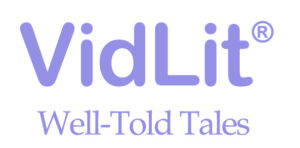
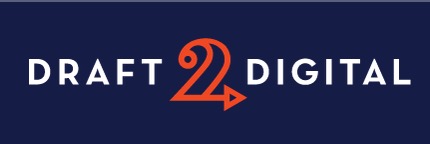
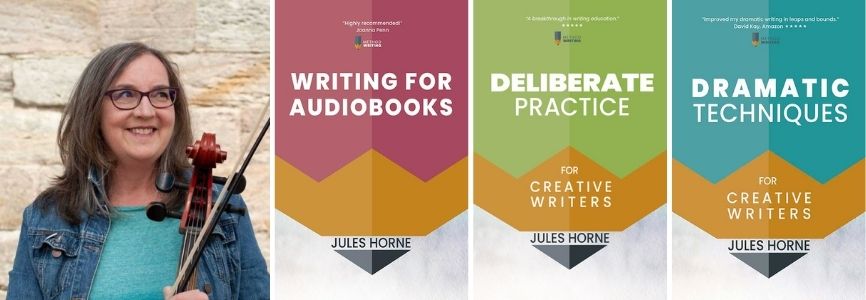
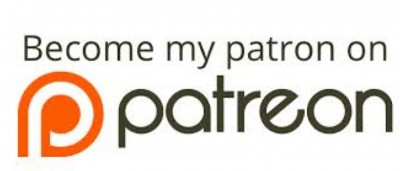


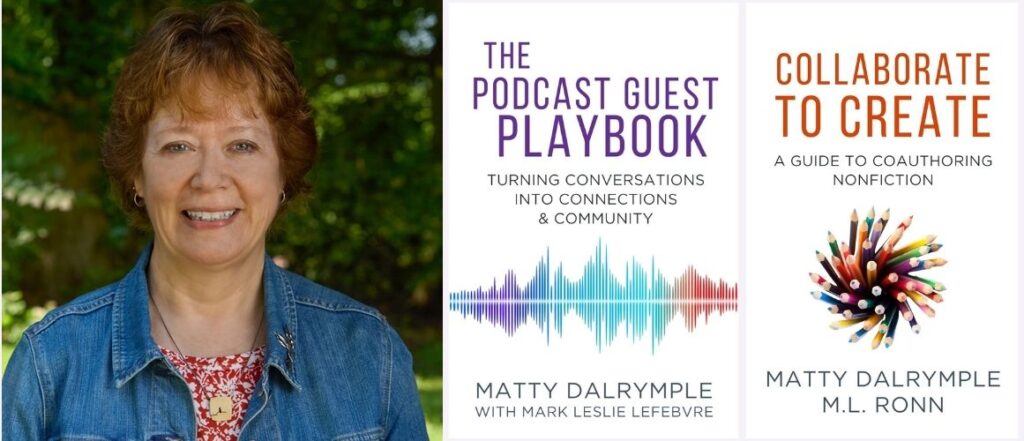
 One of the most exciting challenges in storytelling is writing characters who grow over time—not just within a single story, but across several. Whether you’re working on a series or revisiting a familiar protagonist in a new standalone, the question inevitably arises: How do you create different character arcs for the same character without repeating yourself? How do you honor what’s come before while still offering readers something new? In many ways, this is where character development becomes the most rewarding—when you’re not just building a compelling arc, but an evolving journey.
One of the most exciting challenges in storytelling is writing characters who grow over time—not just within a single story, but across several. Whether you’re working on a series or revisiting a familiar protagonist in a new standalone, the question inevitably arises: How do you create different character arcs for the same character without repeating yourself? How do you honor what’s come before while still offering readers something new? In many ways, this is where character development becomes the most rewarding—when you’re not just building a compelling arc, but an evolving journey.








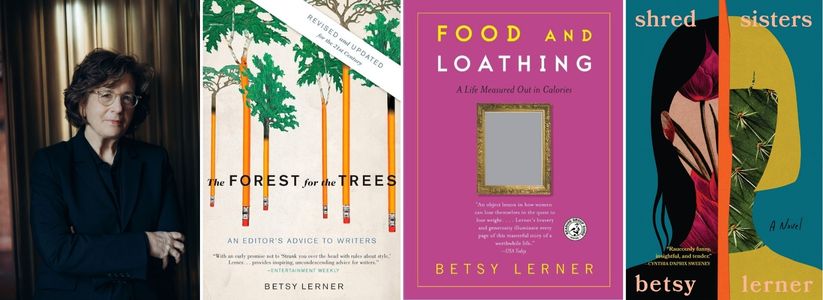

 One of the most interesting challenges of writing a series is figuring out how to create different character arcs for the same character, without it feeling repetitive or forced. Whether you’re writing a progressive arc that unfolds over several books or you’re exploring entirely different arcs in each installment, the goal is always to keep the character’s journey fresh and meaningful.
One of the most interesting challenges of writing a series is figuring out how to create different character arcs for the same character, without it feeling repetitive or forced. Whether you’re writing a progressive arc that unfolds over several books or you’re exploring entirely different arcs in each installment, the goal is always to keep the character’s journey fresh and meaningful.






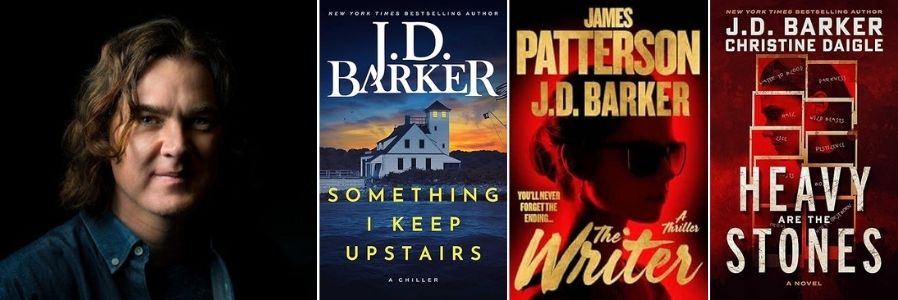
 Note From KMW: This week’s post is a quick one—but it covers a sneaky little habit that can creep into even the best of stories: overexplaining in dialogue. I’ve seen it in books I’ve read, and I’ve definitely caught myself doing it too. It’s easy to do when we want to make sure readers really understand what’s going on, but often, this dialogue mistake just ends up slowing the story and undercutting our characters.
Note From KMW: This week’s post is a quick one—but it covers a sneaky little habit that can creep into even the best of stories: overexplaining in dialogue. I’ve seen it in books I’ve read, and I’ve definitely caught myself doing it too. It’s easy to do when we want to make sure readers really understand what’s going on, but often, this dialogue mistake just ends up slowing the story and undercutting our characters.
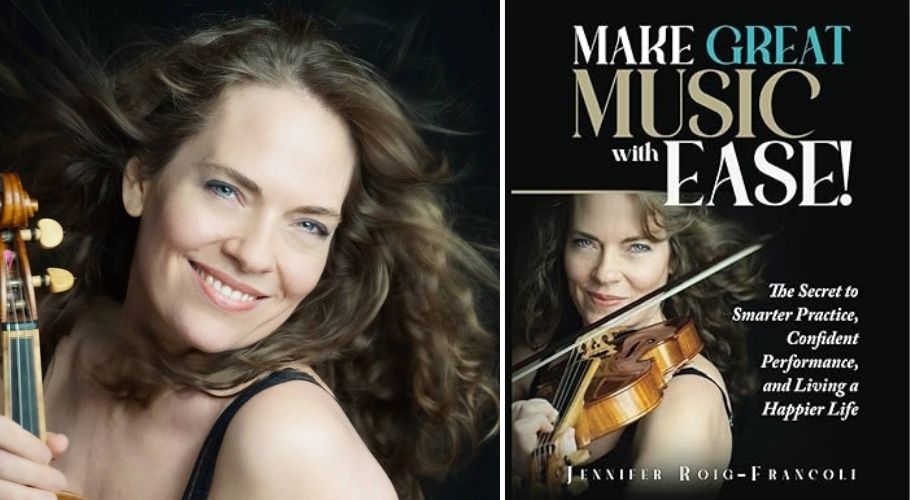
 Note From KMW: Before we get started today, this is just a quick note to let you know that today is the final day you can
Note From KMW: Before we get started today, this is just a quick note to let you know that today is the final day you can
























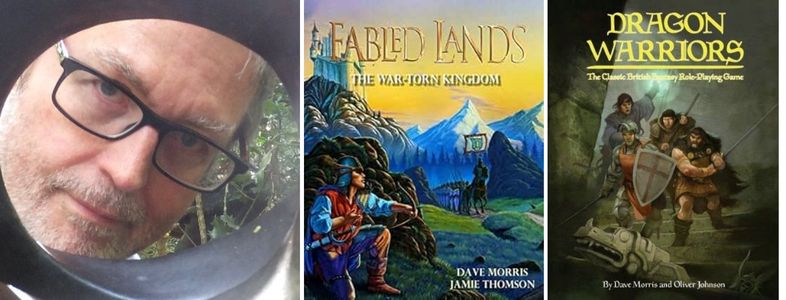
Recent Comments